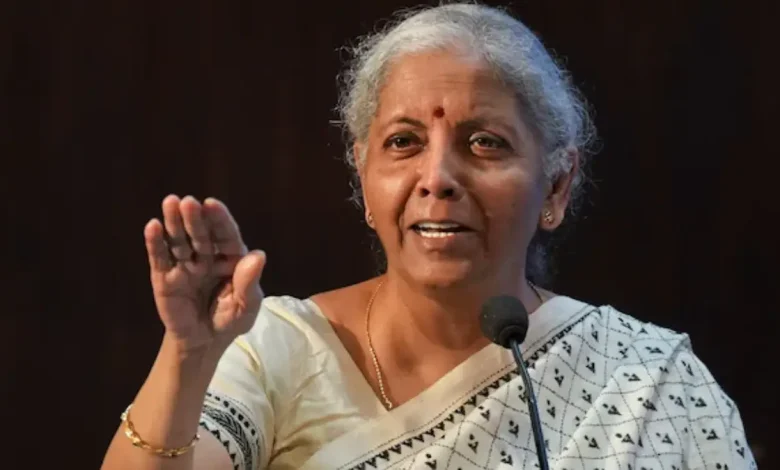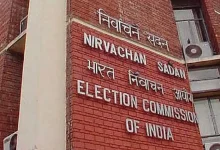
New Delhi: Government leaders on Saturday celebrated the swift impact of recent GST overhaul, pointing to surging retail sales and lower prices on everyday essentials as early signs of a robust consumption rebound that could bolster India’s GDP in the coming year.
During a press event dubbed “GST Bachat Utsav,” Finance Minister Nirmala Sitharaman, alongside Commerce and Industry Minister Piyush Goyal and Information and Broadcasting Minister Ashwini Vaishnaw, outlined how the updated tax framework—launched on September 22—has effectively lowered costs for consumers, fueling purchases across sectors like electronics and household products. The initiative, they emphasized, marks a pivotal evolution in India’s indirect tax system, streamlining rates and enhancing fiscal flexibility.
Sitharaman underscored that the changes extend beyond seasonal promotions, positioning sustained consumer spending as a cornerstone for broader economic expansion. Addressing queries on whether the uptick stems from delayed demand or festive impulses, she clarified: “These reductions aim to streamline operations, allowing improved revenue streams to translate into tangible relief for buyers.” With monthly GST inflows nearing Rs 2 lakh crore, she noted, authorities now possess the leeway to ease rates without compromising stability.
Central tax officials are scrutinizing price movements for 54 essential goods since the reforms’ debut, confirming that benefits have flowed through to shoppers in nearly every category. Only select premium cement variants, such as certain Portland Pozzolana types from one or two producers, have lagged slightly in transmission, though reductions are evident elsewhere—including dairy products and most construction materials. “Across these monitored items, drawn from regional inputs, we’re assured the savings are reaching end-users,” Sitharaman affirmed.
The GST 2.0 blueprint, unveiled by Prime Minister Narendra Modi in his August 15 address and endorsed by the GST Council on September 3, consolidates prior multi-tier slabs (5%, 12%, 18%, and 28%) into a simpler duo: a 5% merit tier for necessities, an 18% baseline, and a 40% levy on vice-linked items. This restructuring, ministers argued, fosters investment by amplifying demand signals.
ALSO READ : GST 2.0 : What Changes In Your Shopping Bill From Today, Read In Details
Vaishnaw highlighted festive data, revealing 20-25% sales gains in electronics over last Navratri, alongside four months of easing food costs. “Electronics output is expanding at double-digit rates, employing around 25 lakh workers directly,” he said, noting India’s edge over regional rivals in U.S. smartphone exports and the recent activation of a second semiconductor facility. Projecting nominal consumption growth exceeding 10%—potentially adding Rs 20 lakh crore to last year’s Rs 202 lakh crore baseline—he linked this to prospective GDP uplift, within the administration’s 6.3-6.8% forecast for FY26. Such momentum, he added, should catalyze parallel investment flows, intertwining household spending with capital formation.
Sitharaman demurred on pinpointing exact growth revisions, but affirmed the evident consumption momentum as a vital growth driver. Dismissing opposition claims of mere fixes, she retorted: “We pioneered GST; critics shied from even trying. This isn’t patching—it’s deliberate collaboration via the Council to amplify public gains. Past regimes clung to 90%+ income taxes without reform.”
Goyal termed the Rs 2.5 lakh crore relief package—spanning direct and indirect taxes—a historic windfall for 140 crore citizens, with ripple effects already spurring industry and inbound capital post-announcement. On e-commerce compliance, he assured most platforms have complied, offering extras like bonuses, with consumer protection bodies poised to intervene if needed. “Businesses have pledged full pass-through,” he stated.
Sitharaman rejected notions tying the timing to U.S. trade talks, revealing 18 months of groundwork via ministerial panels predating any tariff tensions. Regarding state revenue concerns, she stressed parity: “Centre and states share equally in ups and downs—no isolated cushions exist.”
Detailed monitoring reveals outsized savings: Shampoos dropped 12.36% on average (versus 11.02% anticipated from the 18%-to-5% shift); talcum and face powders fell 11.77% and 12.22%, respectively; clinical diapers eased 10.38% against 6.25% expected. Kitchenware prices declined 10.24%, toys like tricycles shed 8.93%, solar cookers 6.96%, and umbrellas 9.19%.
Vehicle dispatches reflected the trend: Three-wheelers rose 5.5% year-on-year to 84,077 units; two-wheelers hit 21.6 lakh (up 6.7%); passenger cars reached 3.72 lakh (up 4.4%); tractors doubled to 1.46 lakh. Per Society of Indian Automobile Manufacturers (SIAM) figures, these gains underscore reform-driven vitality.
The package encompasses rate rationalization, slab consolidation, registration easing, and classification clarifications—resolving long-standing disputes and court backlogs. Timed for Diwali and coinciding with Navratri’s start, it has resonated widely, Sitharaman concluded.




